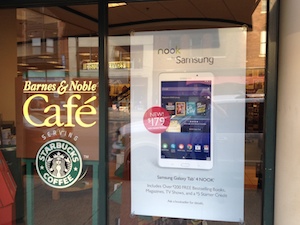 In the world of Internet-delivered radio, at least three significant categories of devices were wiped out by the success of the smartphone and its somewhat bigger brother, the tablet.
In the world of Internet-delivered radio, at least three significant categories of devices were wiped out by the success of the smartphone and its somewhat bigger brother, the tablet.
First, there was the dedicated portable handheld Internet radio. Both Slacker and Rhapsody, if I recall correctly, in their early days sold single-function devices, similar to the transistor radios of my youth, that would let you listen to their Internet radio service (but no other). Slacker’s devices even downloaded music from satellites into the devices for later playback — their G2 model could hold 25 stations and 2,500 songs, according to this defunct Amazon listing.
Second, there was the tabletop Internet radio. Mimicking the design of shoebox-size AM/FM radio your parents probably had on top of the refrigerator, except selling for closer to $249 than $24, these devices included the never-really-launched retro-looking Kerbango radio, the sleek Squeezebox radio, and many others. They were AC-powered and connected to your home Internet connection via WiFi or ethernet cable.
Third, there was the device that would somehow plug into your dashboard, as expressed by, for example, certain Livio prodicts. (See example here.)
All three product categories, as I said above, got essentially wiped out by the arrival of the iPhone and iPad and their close competitors. A smartphone provides all the functions of the Slacker/Rhapsody devices at no extra cost. A smartphone or tablet with the addition of a cheap speaker dock wildly outperforms the tabletop radios (stereo, bigger screen, charging of your device, etc.) at a fraction of their price. And the easy way into the car dashboard today is directly from your smartphone via Bluetooth.
All that said, we’re seeing a similar pattern in e-readers, as highlighted in the launch yesterday by Barnes & Noble of the new “Nook by Samsung.”
If Barnes & Noble follows the Borders route and fails to survive as a national bookstore chain, it will be at least partially because of the hundreds of millions of dollars they wasted trying to become an electronics manufacturer with their initial Nook models.
The new Nook is basically a 7″ screen Galaxy Tab 4 with some extra software that drives the owner to Barnes & Noble for purchases, plus a supposed $200 in free content (which, as near as I can tell from the press it’s getting, is essentially three books and three TV show episodes, which sounds more like a $36 value to me, even if you like and don’t already own any of their six choices).
Rebranding a Galaxy Tab makes perfect sense. Tablets make great e-readers, and all you have to do to make them work is download a Kindle or Nook app (for free) because, like the examples above for Internet radio, you have all the hardware you need in the device you already own. (Minor exceptional circumstance: For reading on a sunny day on a beach, nothing beats a $99 e-ink based dedicated device, a la Amazon’s Kindle Paperwhite.)
But now super-loyal Barnes & Noble customers, of which I’m sure there are still a few million, if they need a new tablet, can support their favorite bookstore chain with this purchase. And it takes Barnes & Noble out of the ridiculous position of trying to be an electronics manufacturer. (Save that hard work for Amazon, which has greater resources.)
And, of course, the new Nook allows you to download Internet radio apps so, as long as you have WiFi, you can listen to great radio while you read — and you don’t need to buy a new transistor radio to do it. It’s a win-win.
